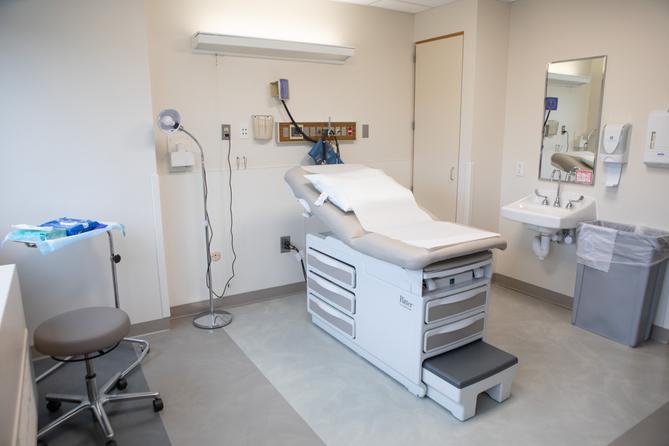BELLEFONTE — As federal Medicaid cuts loomed over Pennsylvania’s rural hospitals, health advocates focused on safeguarding funding for these already strained facilities and programs that help keep their doors open during this year’s state budget talks.
The $50.1 billion state budget — passed by the legislature and signed by Democratic Gov. Josh Shapiro after a four-month impasse — maintains support for rural and critical access hospitals. It preserves spending on programs that have faced cuts and closures in rural areas. And it increases state Medicaid spending as the feds prepare to cut roughly $1 trillion in funding over the next decade because of the so-called “big, beautiful” budget bill.
While stakeholders are pleased with the state’s final deal, it only offers some relief for rural Pennsylvania, where hospitals operate on thin margins and Medicaid helps keep the lights on. Advocates — now focused on next year’s budget — are hoping Pennsylvania can secure a piece of a new $50 billion federal program to address longstanding challenges to accessing care in rural communities.
The Hospital and Healthsystem Association of Pennsylvania (HAP), which represents more than 235 hospitals statewide, welcomed the preservation of past funding — such as $7.9 million for critical access hospitals and $10.6 million for obstetric and neonatal services — president and CEO Nicole Stallings told Spotlight PA.
The budget includes $10 million in one-time payments to rural hospitals, which will draw a $25.1 million federal match. Financially distressed hospitals will also receive $13.5 million, and while those dollars aren’t exclusively earmarked for rural facilities, Stallings expects they’ll still benefit.
Lisa Davis, director of the Pennsylvania Office of Rural Health, said the boost for Medical Assistance, or Medicaid programs — a more than $775 million increase collectively — is “really needed” amid an expected increase in uninsured patients and uncompensated care due to the federal cuts.
“No state in the country can really adequately fill those losses, but I think being able to have this increased funding for Medicaid is good,” Davis told Spotlight PA.
About 3 million people in Pennsylvania — 23% of the population — are covered by Medicaid, according to state data. More than 728,000 recipients live in rural counties, where residents are typically older and more reliant on government-funded insurance programs. Those programs reimburse at lower rates compared to private insurance companies and haven’t kept pace with inflation.
Medicaid currently reimburses hospitals 71 cents on the dollar. Once the federal changes take full effect, HAP estimates that number will drop to 64 cents, Stallings said.
“We know that’s not going to be sustainable,” she said. “About 39% of our rural hospitals are currently experiencing year-over-year negative operating margins. They are financially fragile and distressed, and these cuts will really accelerate a lot of the challenges that they’re facing.”
A report commissioned by Congressional Democrats over the summer estimated that five rural hospitals in Pennsylvania were at risk of closing or reducing services. The list included Penn Highlands Connellsville in Fayette County, which announced layoffs in June.
Congressional Republicans did secure a $50 billion allocation for the Rural Health Transformation Program as part of the federal spending package. Lawmakers see it as an opportunity to address workforce gaps, upgrade technology, and bolster access to care.
“Anything that comes down from the federal government to help ease up on the burden of health care in the state is always welcome,” state Rep. Kathy Rapp (R., Warren) told Spotlight PA.
A spokesperson for the state Department of Human Services previously told Spotlight PA the federal grant dollars won’t be enough to fill the “massive gap” created by the federal Medicaid cuts. Allocations from the program will be decided by Dec. 31 and begin during fiscal year 2026.
Pennsylvania’s 67-page application asks for $200 million annually, totaling $1 billion over five years. The money cannot be used to replace federal funds lost from other cuts and changes.
The state pulled from years of feedback from rural communities to draft its request, which focuses on regionalized care, expanded mental health resources, and modernizing emergency services infrastructure. Officials also suggested scholarship and stipend programs with five-year service requirements and short-term housing to attract health care professionals to rural areas.
In a letter of support, Shapiro said the plan would “deliver sustainable, long-term progress that is essential to ensuring access to care and supporting rural communities for decades to come.”
“This work is both an investment in public health and in economic development for rural Pennsylvania,” he wrote. “I am committed to helping build a better future for the people who call these communities home, and I am confident that our plan sets us on that course.”
